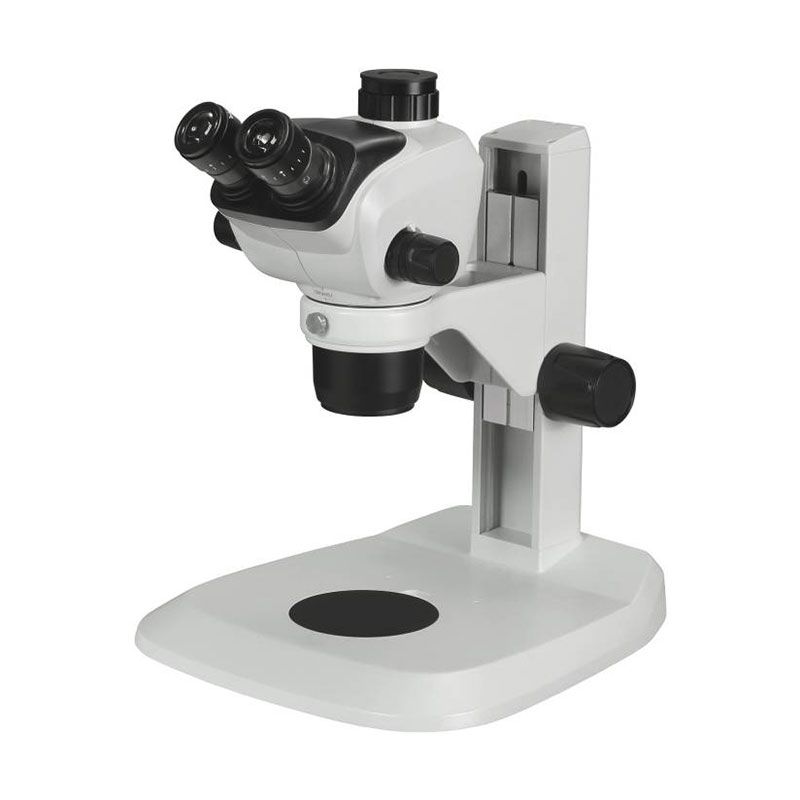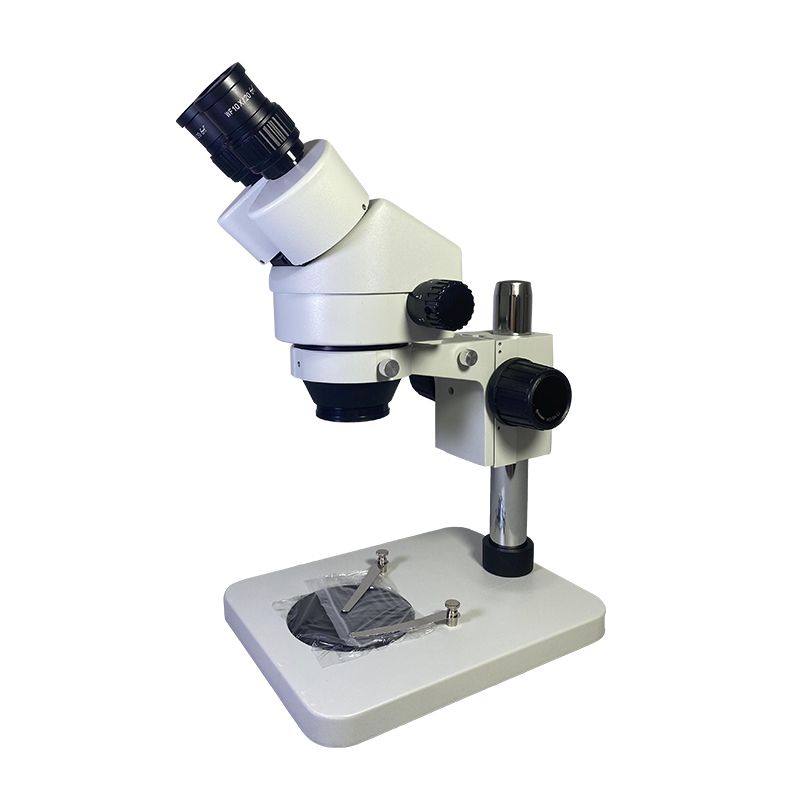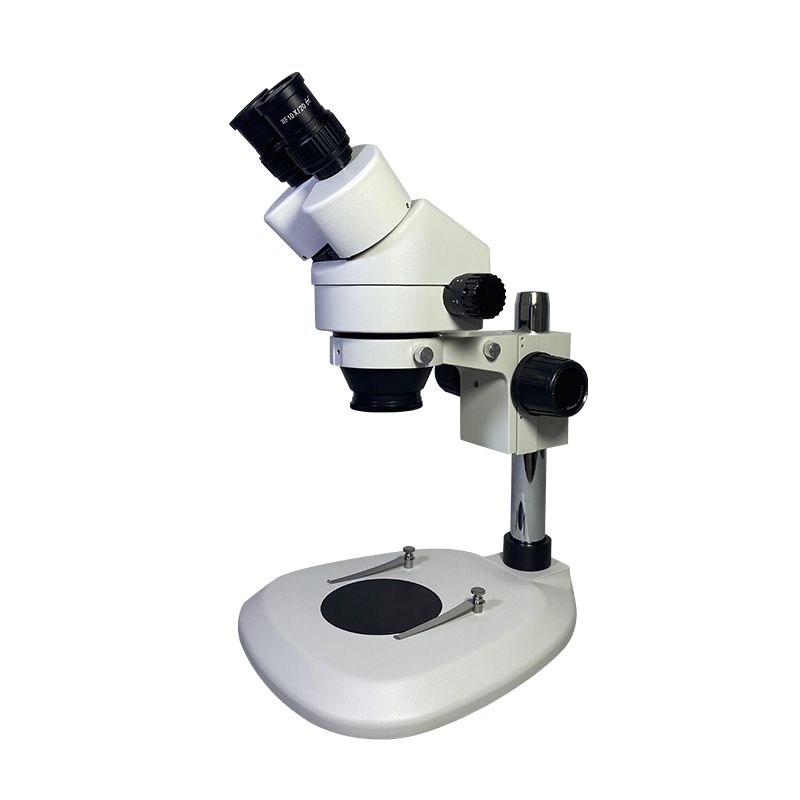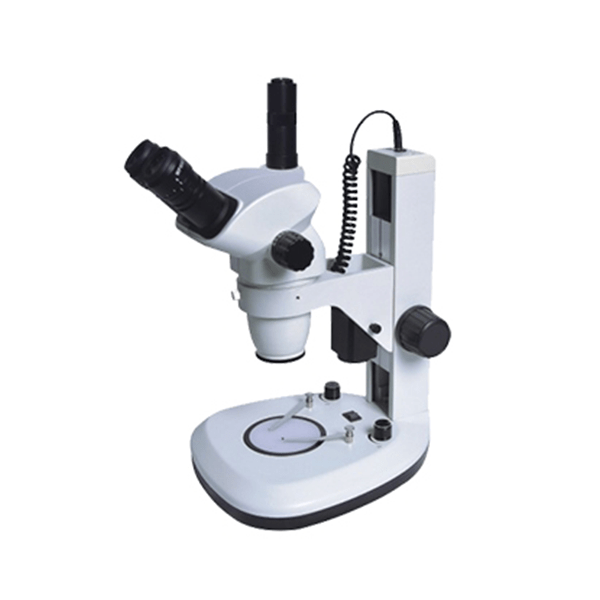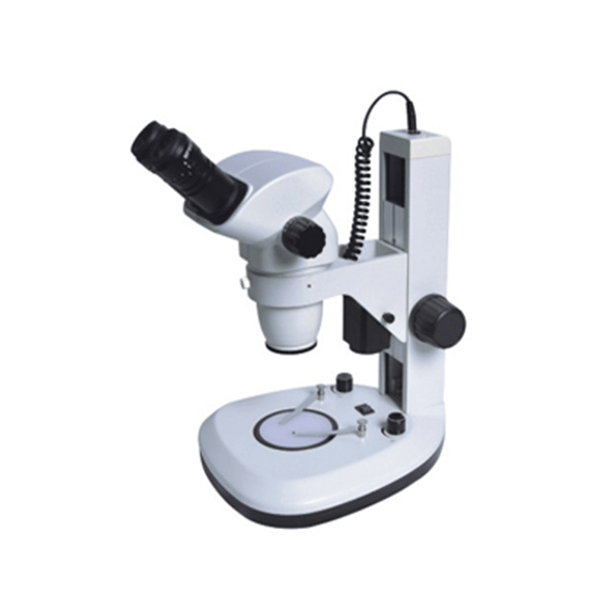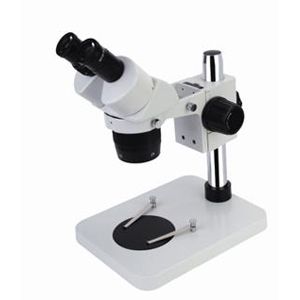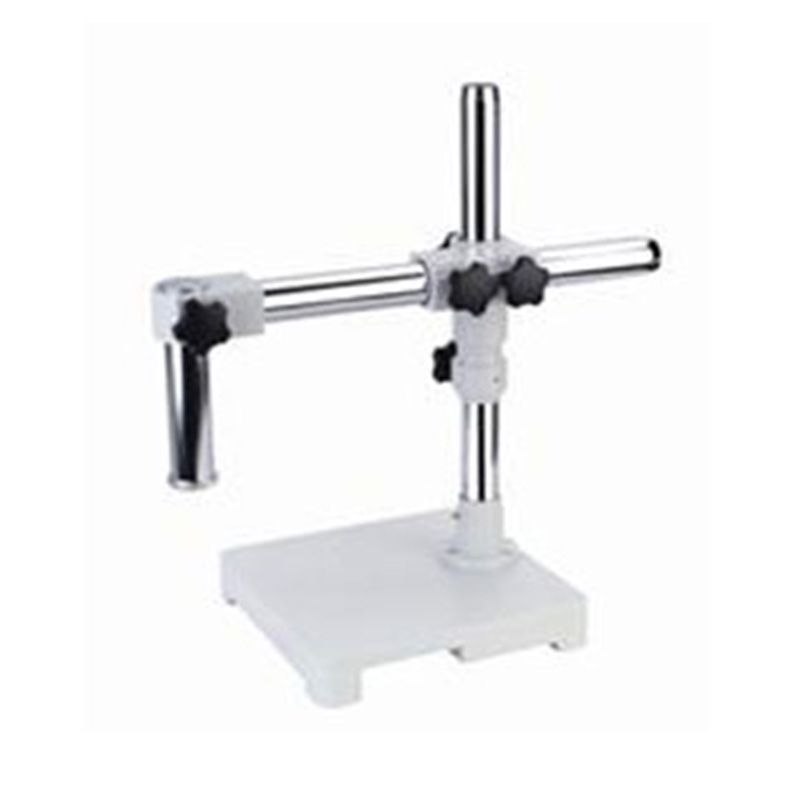Stereo zoom microscopes are essential tools across electronics, life sciences, forensics, jewelry, and manufacturing industries. But choosing the right model can be confusing, especially with so many features, specifications, and overlapping terminology.
This guide breaks it all down—from microscope categories to practical tips for selection—with a deep focus on stereo zoom microscopes. You’ll walk away with everything you need to make a confident, expert-level decision.
What Is a Stereo Zoom Microscope?
A stereo zoom microscope, sometimes called a dissecting microscope, is designed for 3D, low-to-medium magnification observation. Unlike compound microscopes that show flat, high-magnification images, stereo zoom microscopes provide depth perception, allowing you to observe and manipulate objects with spatial awareness.
Key Features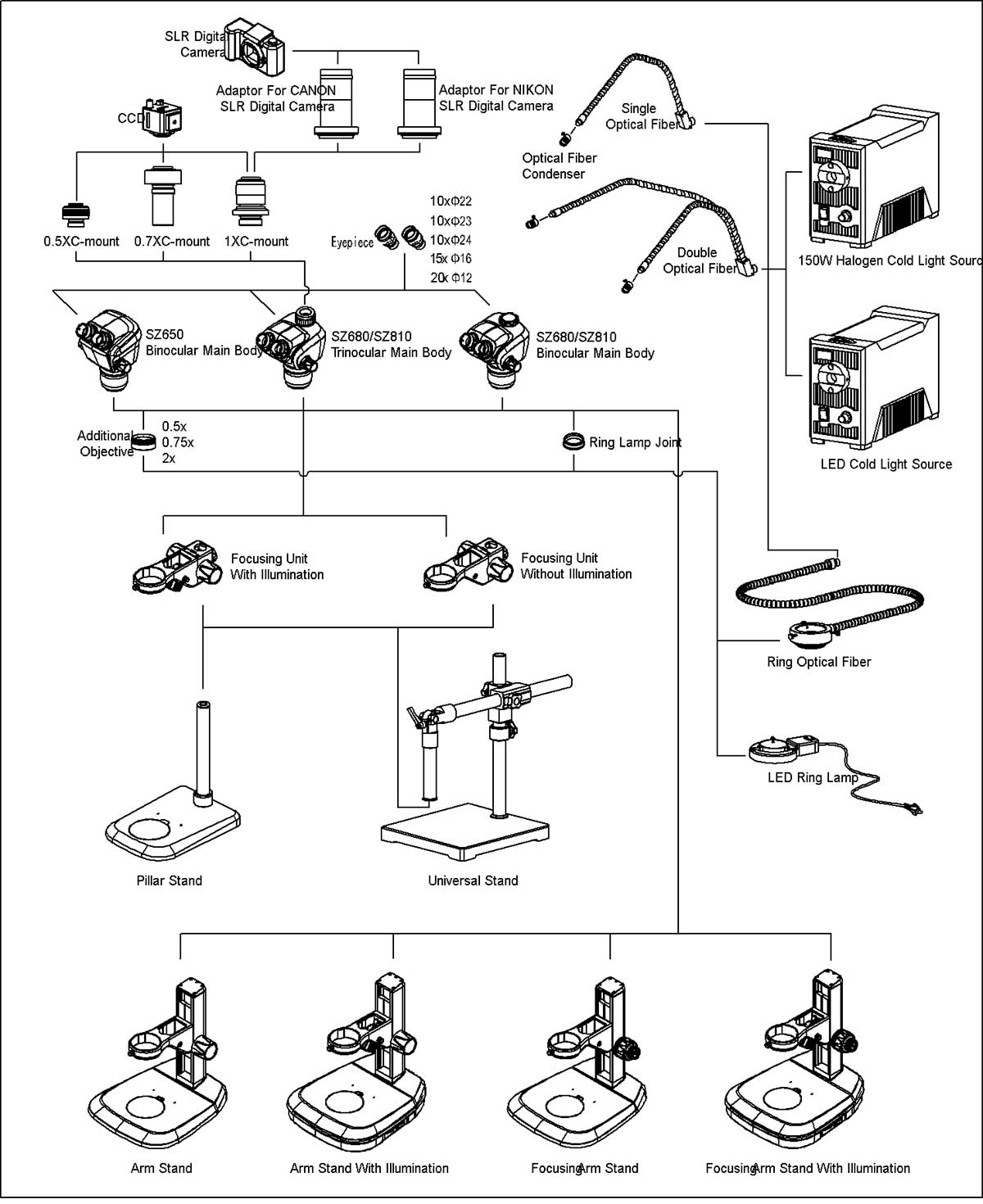
| Description |
| Two optical paths create a 3D image with depth perception |
| Continuous magnification adjustment (e.g., 7x–45x) |
| Allows for hands-on manipulation of specimens |
| Allows camera attachment for documentation or live streaming |
| Supports ring lights, transmitted light, coaxial light, and more |
Stereo Zoom Microscopes vs Other Microscope Types: Why They Stand Out
Before choosing, it helps to know how stereo zoom microscopes compare to other mainstream options: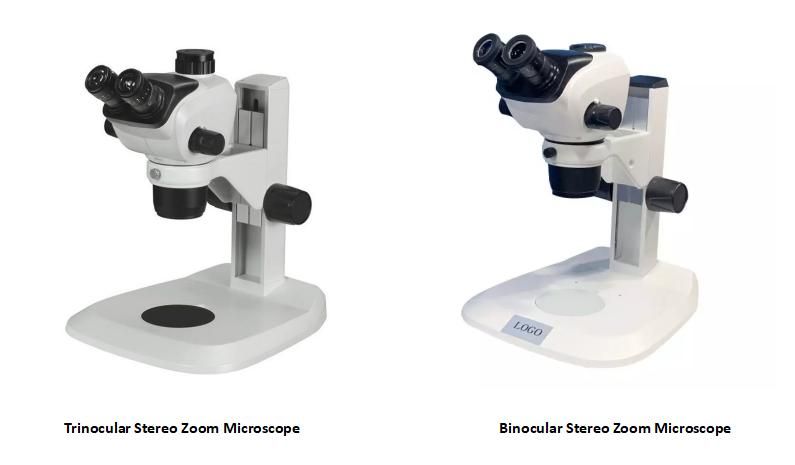
| Type | 3D View | Magnification | Use Case Examples | Pros | Cons |
| Stereo Zoom | ✅ Yes | 5x–100x | PCB inspection, dissection, assembly, insects | Depth perception, hands-on work | Not suitable for cell-level detail |
| Compound | ❌ No | 40x–1000x+ | Biology labs, cellular structures | High resolution, ideal for slides | 2D only, short working distance |
| Digital Microscope | ❌ (2D) | Varies | Teaching, documentation | Easy to use, screen output | Often lacks stereo depth |
| Metallurgical | ❌ No | 50x–400x | Materials testing, metal surface analysis | Reflective light support | Expensive, bulky |
| Polarizing | ❌ No | 40x–400x | Geology, crystal orientation | Excellent for birefringent materials | Niche application |
| Fluorescence | ❌ No | 100x–1000x+ | Cell biology, tagged molecule detection | Sensitive biological imaging | High cost, complex setup |
If your work involves surface inspection, manipulation, repair, or assembly, a stereo zoom microscope is your best choice.
Top Use Cases
- ✅ Soldering & electronic inspection
- ✅ Botanical or entomological dissection
- ✅ Gemstone evaluation and jewelry work
- ✅ Forensics and lab investigations
- ✅ Quality control and production
How to Choose the Right Stereo Zoom Microscope
Application
Understanding your use case is half the battle:
| Application | Recommended Magnification | Key Needs |
| Soldering / PCB work | 7x–30x | Large working distance, ring light |
| Biological dissection | 10x–40x | Transmitted + top lighting |
| Gemstone / watch inspection | 20x–50x | Darkfield or coaxial illumination |
| Industrial QA / surface analysis | 30x–80x | High clarity, camera port |
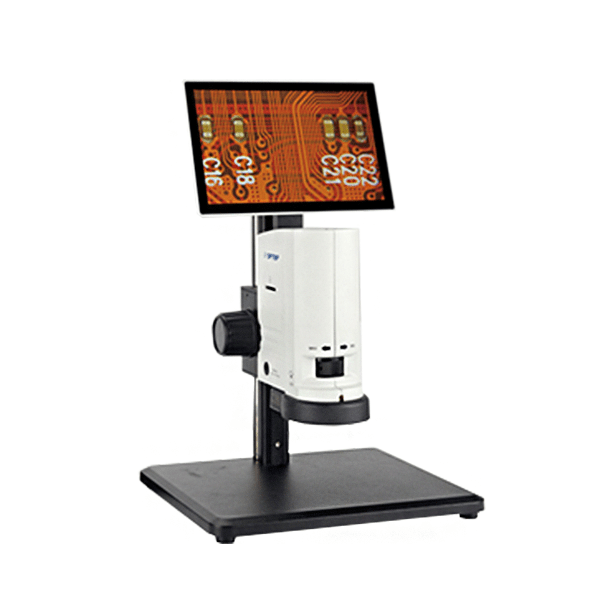
Specifications
- Zoom Range: Common ranges include 0.7x–4.5x (7x–45x with 10x eyepieces). Go higher for greater detail or add auxiliary lenses.
- Field of View (FOV): Wider FOV makes it easier to locate and observe objects.
- Working Distance: Longer distances (>100 mm) are better for manipulation tasks.
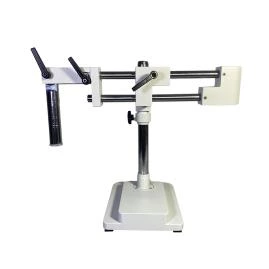
Binocular and Trinocular
| Type | Pros | When to Choose |
| Binocular | Comfortable for long observation sessions | You don’t need image capture |
| Trinocular | Has an extra port for cameras | You plan to record or stream views |
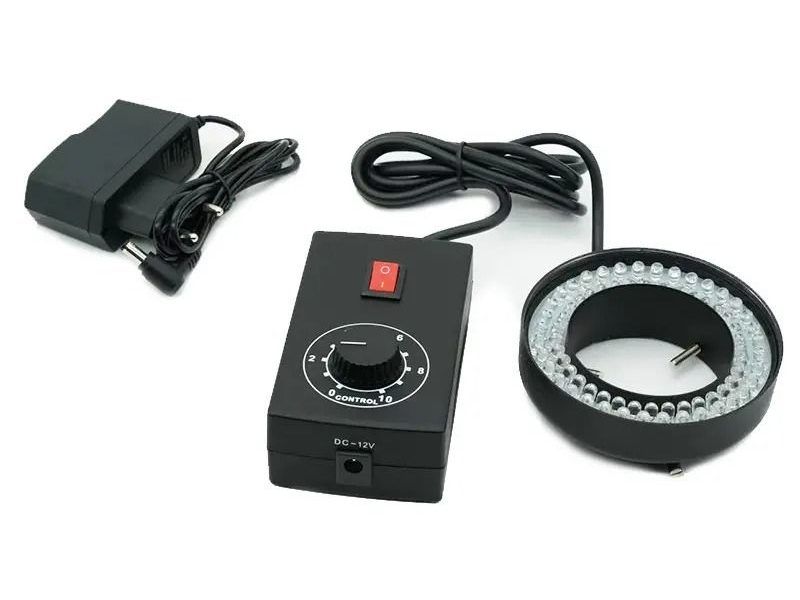
Evaluate Illumination Options
| Illumination Type | Use Case |
| LED Ring Light | Uniform surface lighting |
| Transmitted Light | For transparent specimens |
| Gooseneck LED | Adjustable angle lighting for reflective items |
| Coaxial Light | Reveals fine surface features |
| Polarized Light | For birefringent materials (e.g., crystals) |
| Darkfield | High-contrast imaging of unstained samples |
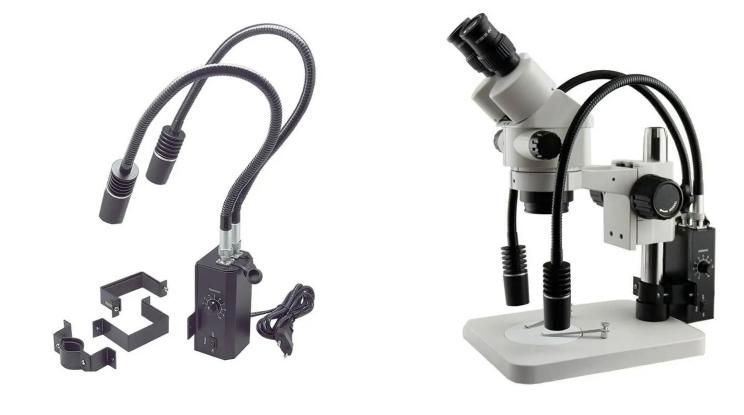
Look for Ergonomic and Expandable Features
- Reticles and measurement eyepieces for precision tasks
- Adjustable viewing angles for neck/eye comfort
- Boom arm stands for large specimens
- HDMI or USB camera adapters
Recommended Brands
Founded in Chongqing, China, Scope Instrument is a manufacturer and global supplier specializing in high-performance stereo zoom microscopes, biological microscopes, and industrial imaging solutions. With over a decade of R&D experience, the company has built a reputation for offering microscopes that combine advanced optics, modular flexibility, and competitive pricing—making them a trusted choice across education, industry, and scientific sectors.
Key Strengths:
- Precision Zoom Optics: Wide magnification ranges (up to 7x–90x) with crystal-clear 3D imaging.
- Trinocular Integration: Seamless support for digital camera and video modules.
- Customizable Systems: Flexible stand options (boom arm, pole, articulated arm) and lighting choices (ring light, coaxial, transmitted).
- Global Exports: ISO9001-certified with partners in Europe, Southeast Asia, and the Americas.
- Factory-Direct Support: Lower cost structure with full tech and after-sales support.
Conclusion
Choosing the right stereo zoom microscope is about clarity—not just of vision, but of purpose. When you align your application with the proper optics, lighting, and configuration, you empower your work with precision and control.
Invest in the right tool, and it becomes an extension of your vision.
